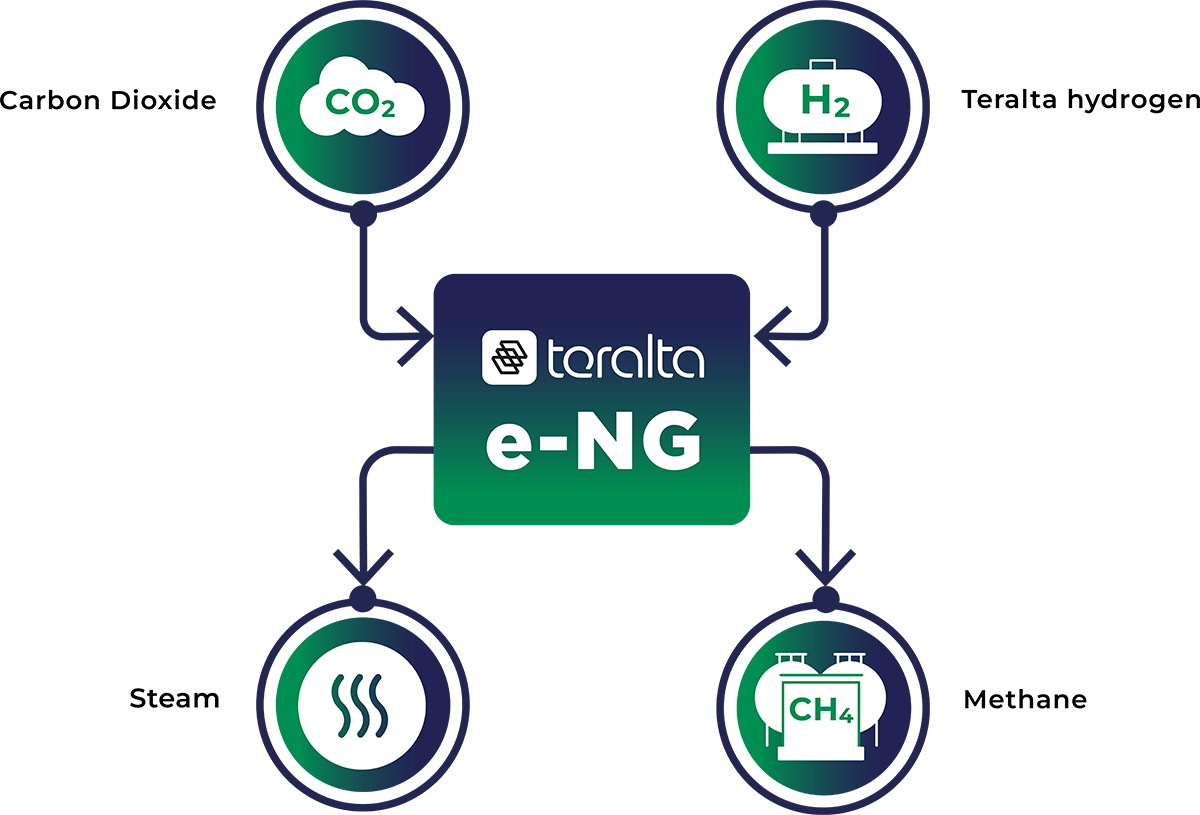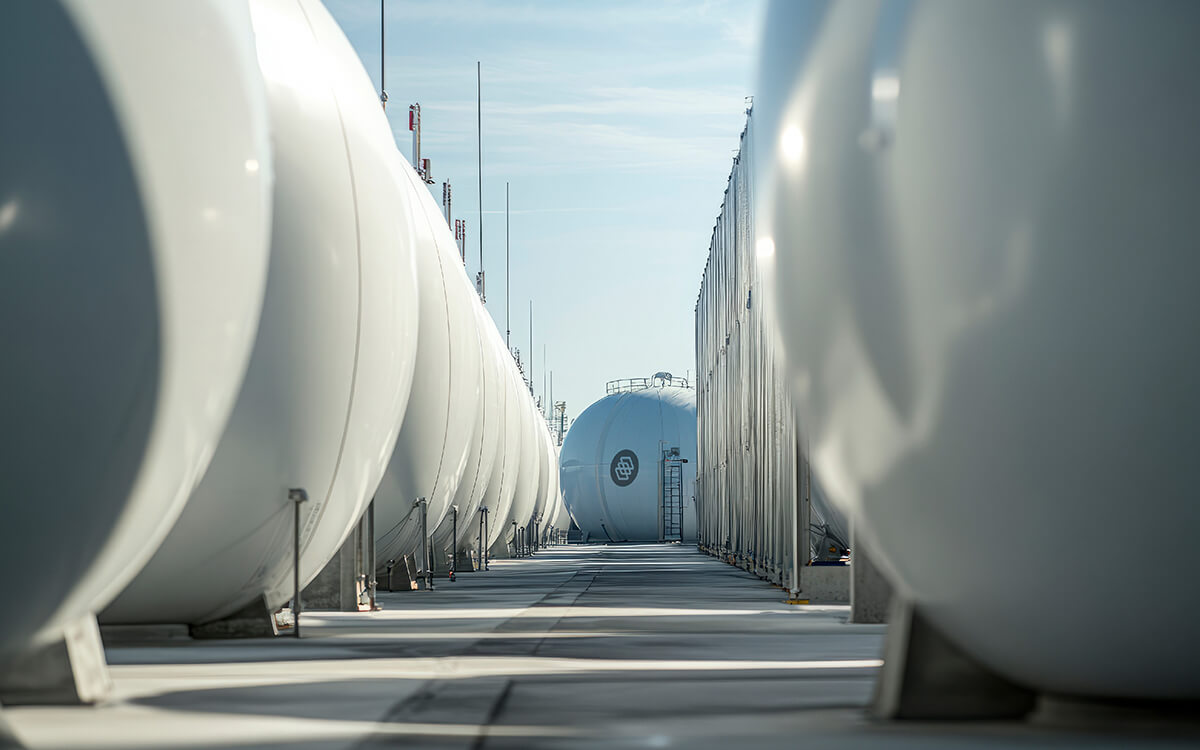Expediting the Distribution of Clean Hydrogen with e-NG
June 2024 by Simon Pickup
I love my job. Every day I get to work with a group of like-minded people obsessed with hydrogen and intent on advancing how we produce the energy that powers our planet.
While hydrogen is beautiful in its simplicity (after all, what other chemical element is readily produced by simply splitting water with electricity?), hydrogen comes with its own set of challenges. Top of the list? Storage and transport.
Due to its low volumetric energy density, pure hydrogen must be pressurized so it can be delivered as a compressed gas, or liquified. As a result, costs go up, and–depending upon the mode of transport (truck, rail, or pipeline)–so do emissions, eroding the environmental attributes of the clean hydrogen.
Over the years, I’ve seen many exciting hydrogen projects die on the vine due to these constraints.
Enter electric natural gas, or e-NG, a synthetic gas produced by combining renewable hydrogen and recycled CO2 via methanation. With Teralta’s unique business model, we’re able to scale the production and delivery of hydrogen-derived e-NG at a fraction of the current cost.
Today, the Teralta team and our partners are doubling down on e-NG as the fastest path to scaling demand for clean hydrogen.
If you’re unfamiliar with e-NG, read on.
What is e-NG?
e-NG is a hydrogen derivative and is produced by combining clean hydrogen and recycled CO2 through methanation. The process is relatively straightforward, using hydrogen with a low carbon intensity as one component in the production of electric natural gas.
At present, most of the world’s hydrogen is produced using unabated fossil fuels, a process that generates emissions of up to 27 kg CO2-eq/kg H2. On the other end of the scale is hydrogen produced with renewable electricity which generates no associated emissions (0 kg CO2‑eq/kg H2).
Using clean hydrogen, e-NG provides positive environmental attributes, enabling access to credits, benefits, emissions reductions, offsets, and other allowances that incentivize industries to shift to a cleaner energy model.
How is Teralta e-NG different from traditional e-NG?

The Teralta stranded hydrogen is already clean, although a simple purification process occurs prior to e-NG production. This is an important distinction as it allows Teralta and our partners to leapfrog over the most time-consuming and expensive stage of traditional e-NG: renewable energy infrastructure for the production of green hydrogen.
Rather than investing millions of dollars and years developing a construction project, Teralta skips this step completely.
While there have been many e-NG project announcements in recent years, few have go-live dates that land within this decade. This is due to the massive renewable energy infrastructure that must be built to produce green hydrogen.
Creating a wind or solar energy farm takes a lot of time and money, delaying access to clean hydrogen when the planet needs it now. For example, to meet the ferocious competing demand from data centers, driven by AI and other high value applications.
How does e-NG help with hydrogen storage and distribution?
e-NG is a sustainable drop-in solution for gas consumers. This means it does not require any modification of industrial processes and applications. Instead, e-NG is transported using existing natural gas pipeline infrastructure. The only requirement is the connection to the larger pipeline system.
With Teralta’s end-to-end business model, the production of integrated hydrogen infrastructure to connect to the natural gas pipeline–including the engineering, manufacturing, installation, and even the operation of these components, is carried out in-house for an astoundingly fast turnaround.
Does the acquisition and transport of the CO2 for e-NG present similar challenges as hydrogen?
Next steps
Hydrogen is a lifelong passion. I’ve witnessed many amazing advances over the years and I believe e-NG is a game-changer.
Teralta and our partners will be producing and distributing e-NG by 2027, leveraging established natural gas infrastructure, stranded hydrogen, and locally sourced carbon.
Working together, we’re building Canada’s first e-NG project that uses stranded hydrogen to generate the lowest cost clean hydrogen on the market today. And we’re delivering the project in record time. Yet one more step in Teralta’s work towards a world where hydrogen is readily accessible at cost parity with (or better than) fossil fuels.
Thank you for taking the time to read my post. If you have a hydrogen question or a project you’d like to discuss, feel free to reach out to me directly on LinkedIn. For more information about Teralta, visit our website or contact us.
